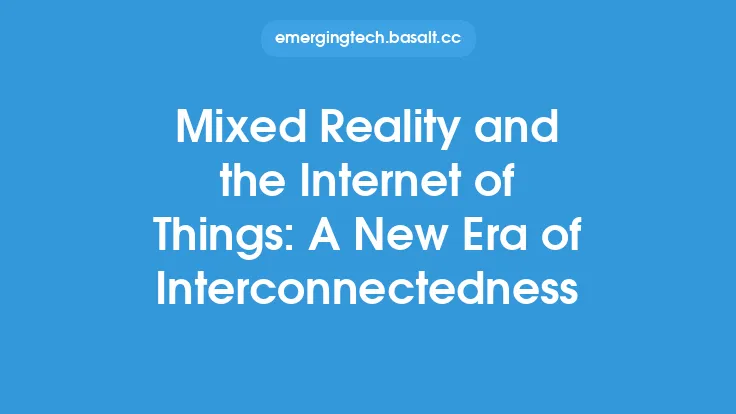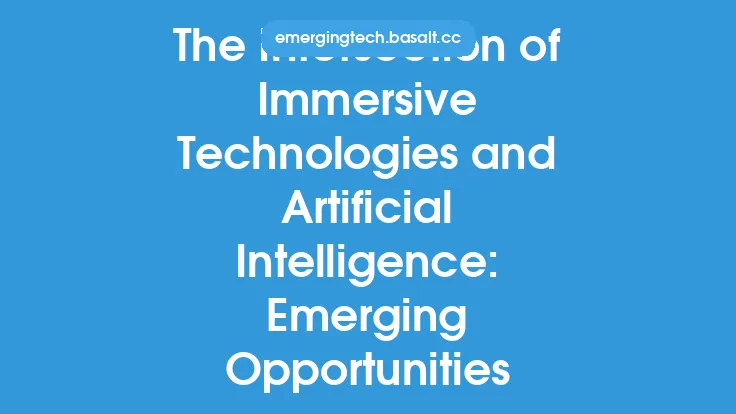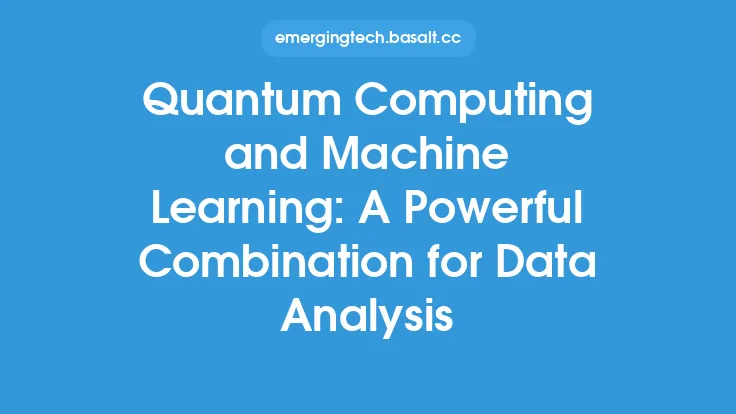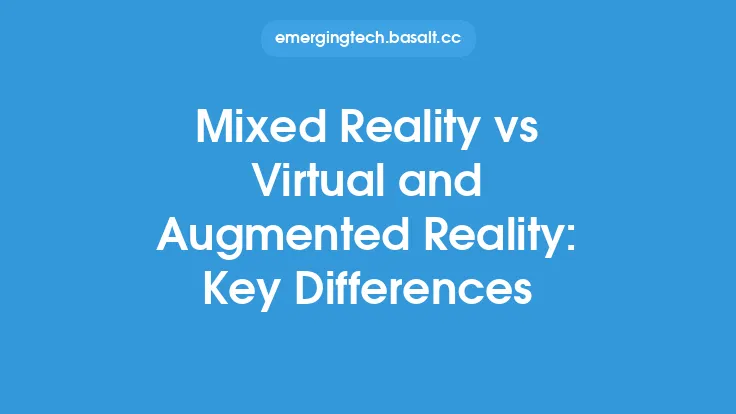The integration of mixed reality (MR) and artificial intelligence (AI) is a rapidly evolving field that has the potential to revolutionize the way we interact with technology and the world around us. By combining the immersive and interactive capabilities of MR with the intelligent and adaptive capabilities of AI, developers can create innovative applications and experiences that were previously unimaginable. In this article, we will explore the powerful combination of MR and AI, and examine the ways in which these technologies are being used to create new and exciting experiences.
Introduction to Mixed Reality and Artificial Intelligence
Mixed reality is a technology that blends the digital and physical worlds, allowing users to interact with virtual objects and environments in a seamless and intuitive way. AI, on the other hand, refers to the development of computer systems that can perform tasks that would typically require human intelligence, such as learning, problem-solving, and decision-making. When combined, MR and AI enable the creation of intelligent and adaptive environments that can respond to user input and behavior in a highly personalized and context-dependent way.
Technical Overview of Mixed Reality and Artificial Intelligence
From a technical perspective, the integration of MR and AI requires the use of a range of advanced technologies, including computer vision, machine learning, and natural language processing. Computer vision, for example, is used to enable MR systems to detect and track user movements and gestures, while machine learning is used to develop AI models that can learn from user behavior and adapt to new situations. Natural language processing, meanwhile, is used to enable MR systems to understand and respond to voice commands and other forms of user input.
Applications of Mixed Reality and Artificial Intelligence
The combination of MR and AI has a wide range of potential applications, from gaming and entertainment to education and healthcare. In the field of gaming, for example, MR and AI can be used to create immersive and interactive experiences that simulate real-world environments and challenges. In education, MR and AI can be used to create interactive and personalized learning experiences that adapt to the needs and abilities of individual students. In healthcare, MR and AI can be used to create virtual reality training simulations that help medical professionals develop the skills and knowledge they need to perform complex procedures.
Architectures for Mixed Reality and Artificial Intelligence
The architecture of an MR and AI system typically consists of several key components, including sensors, processing units, and output devices. Sensors, such as cameras and microphones, are used to detect user input and behavior, while processing units, such as CPUs and GPUs, are used to process and analyze this data. Output devices, such as displays and speakers, are used to present the user with a virtual environment that responds to their actions and behavior. In addition to these components, MR and AI systems often rely on advanced software frameworks and tools, such as Unity and Unreal Engine, to enable the creation of immersive and interactive experiences.
Challenges and Limitations of Mixed Reality and Artificial Intelligence
Despite the many potential benefits of MR and AI, there are also several challenges and limitations that must be addressed. One of the main challenges is the need for high-quality sensors and processing units, which can be expensive and difficult to integrate into MR systems. Another challenge is the need for advanced AI models that can learn from user behavior and adapt to new situations, which can be difficult to develop and train. Additionally, MR and AI systems often require significant amounts of data and computational resources, which can be a challenge in terms of storage, processing, and bandwidth.
Future Directions for Mixed Reality and Artificial Intelligence
The future of MR and AI is likely to be shaped by several key trends and technologies, including the development of more advanced sensors and processing units, the creation of more sophisticated AI models, and the integration of MR and AI with other technologies, such as the Internet of Things (IoT) and cloud computing. As these technologies continue to evolve and improve, we can expect to see the creation of even more innovative and immersive MR and AI experiences that transform the way we live, work, and interact with the world around us.
Conclusion
In conclusion, the combination of MR and AI is a powerful and rapidly evolving field that has the potential to revolutionize the way we interact with technology and the world around us. By providing a technical overview of MR and AI, exploring their applications, architectures, challenges, and future directions, we can gain a deeper understanding of the potential benefits and limitations of these technologies. As MR and AI continue to evolve and improve, we can expect to see the creation of even more innovative and immersive experiences that transform the way we live, work, and interact with the world around us.





